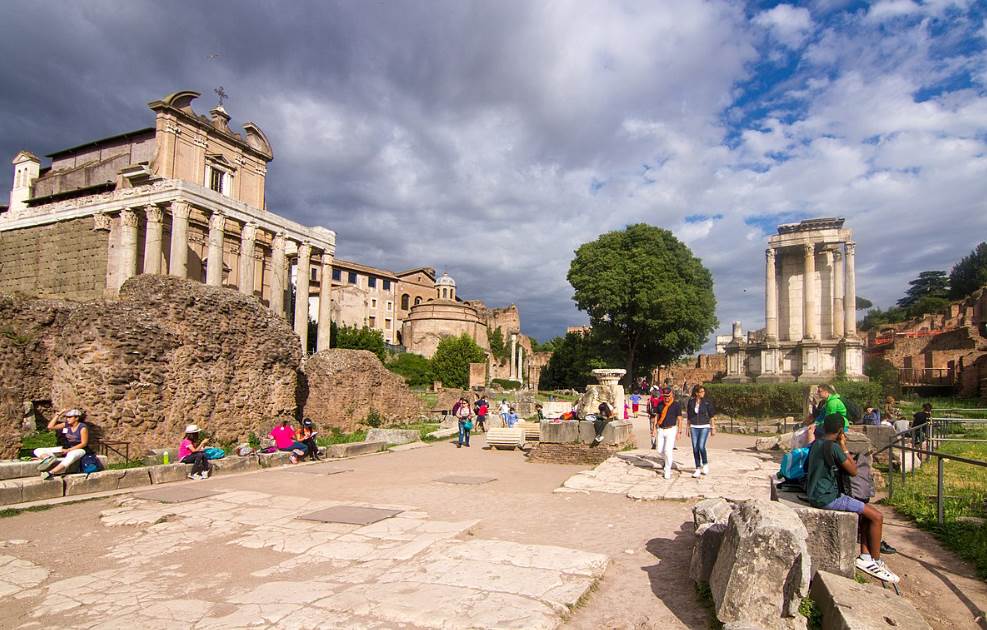The Roman Forum was the heart of the ancient city of Rome. It was here that most of the important government buildings were located.
Its importance gradually declined over the centuries as the city expanded and even larger structures were constructed, including 5 new Imperial fora.
In this article, you’ll discover some of the most interesting facts about Trajan’s Forum, an incredible ancient landmark in Rome that was completed in the 2nd century A.D.
1. It’s located just a few hundred meters north of the Roman Forum
Trajan’s Forum is one of the 5 Imperial fora that were constructed in ancient Rome between 46 B.C. and 113 A.D. Julius Caesar was the first to build such a public square lined with important buildings and monuments.
Other fora included the Forum of Augustus, the Temple of Peace (also known as the Forum of Vespasian), and the Forum of Nerva.
Trajan’s Forum was both the largest and final of the imperial fora that were constructed during this period in history.
What’s remarkable about these structures is that they are located relatively close to each other in the historical heart of Rome. This particular forum is located just north of the Roman Forum and gradually replaced it as commercial activity and government institutions moved here.
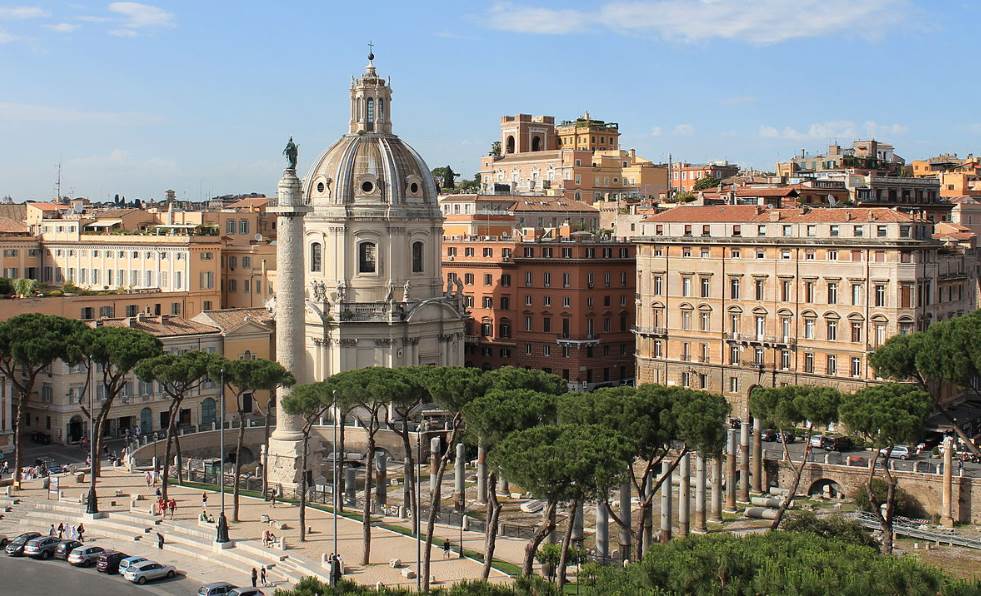
2. It was commissioned by one of the best Roman Emperors
The forum was commissioned by Roman Emperor Trajan (53-117 A.D.), a man who is considered to be one of the best Roman Emperors in history.
This is emphasized by the fact that all new Roman Emperors after him were wished with the words “Felicior Augusto, Melior Traiano” or “May you rule fortunate like Augustus and better than Trajan.”
First Roman Emperor Augustus initiated numerous building programs all across the Roman Empire, and Trajan can hold a candle to his achievements.
Trajan’s Forum was constructed between 106 and 112 A.D. and the spoils of war from the Roman victory against the Dacians were used to build it.
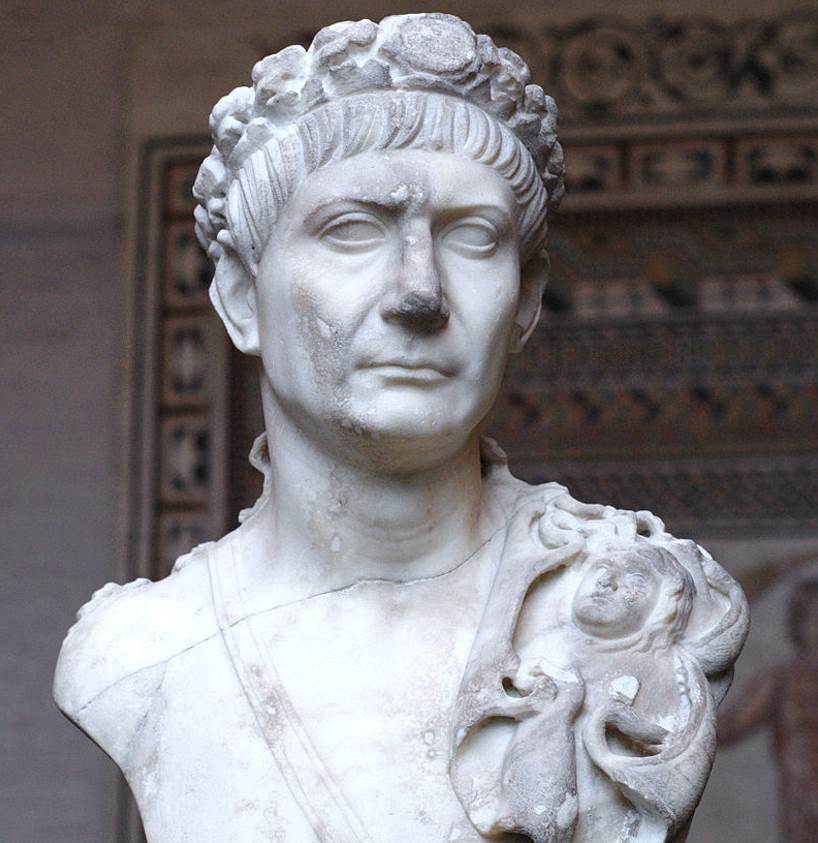
3. Building this monumental forum was an incredible endeavor
The construction project of the forum was led by one of the few ancient architects who we know by name, a man named Apollodorus of Damascus. He was Trajan’s architect and designed numerous structures all across the Empire.
To build the forum in this location, a massive amount of dirt and rock had to be excavated. That’s because the eastern part of the forum was built against Quirinal Hill.
It’s estimated that 300,000 cubic meters (10,594,400 cubic feet) of soil and rock were removed before construction could even start, a massive endeavor considering the workers didn’t have modern-day machinery.
The central part of the forum was a huge open space that was lined with semicircular elements called “exedra” on each side. This plaza was completely covered in Carrara marble and was 300 meters (980 feet) long and 185 meters (07 feet) wide.
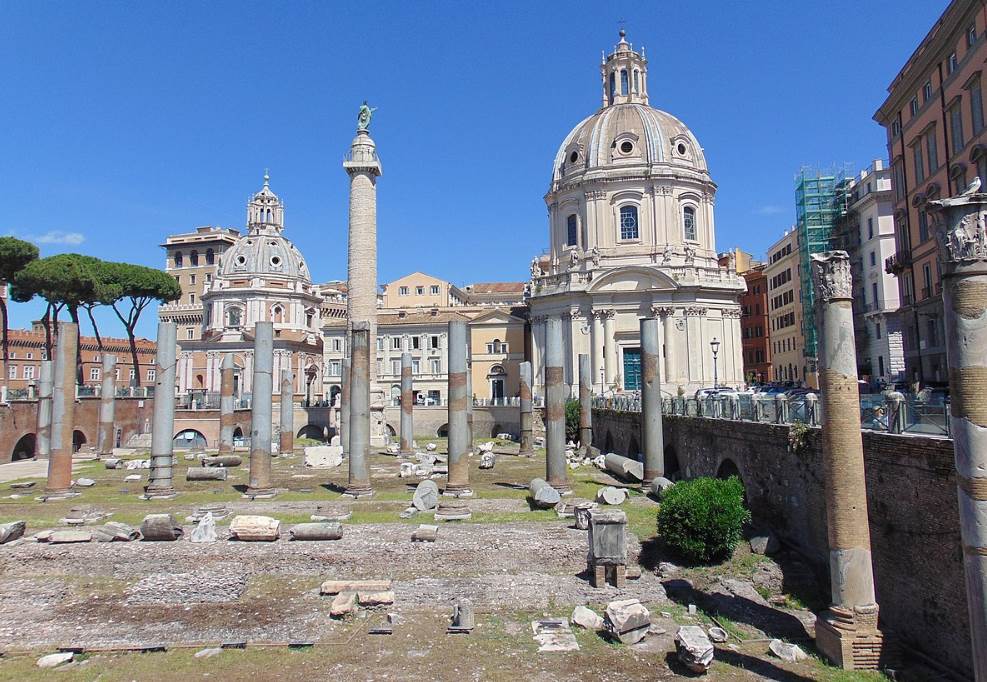
4. The Forum is dominated by an ancient shopping mall and a huge column
The eastern section of the forum featured one of the most popular places in ancient Rome, a shopping mall that is known as Trajan’s Market.
This 3-story building has been remarkably well-preserved and is considered to be the first shopping mall in the world. It was constructed on the excavated site of Quirinal Hill.
Other important buildings on the forum were the Basilica Ulpia, a huge civic building, the Temple of Trajan (which was dedicated to the deified Trajan after his death), and two libraries.
RIght in between these libraries, an enormous column was erected called “Trajan’s Column.” This monument stands 38 meters (125 feet) tall and is decorated with reliefs commemorating the Roman victory against the Dacians.
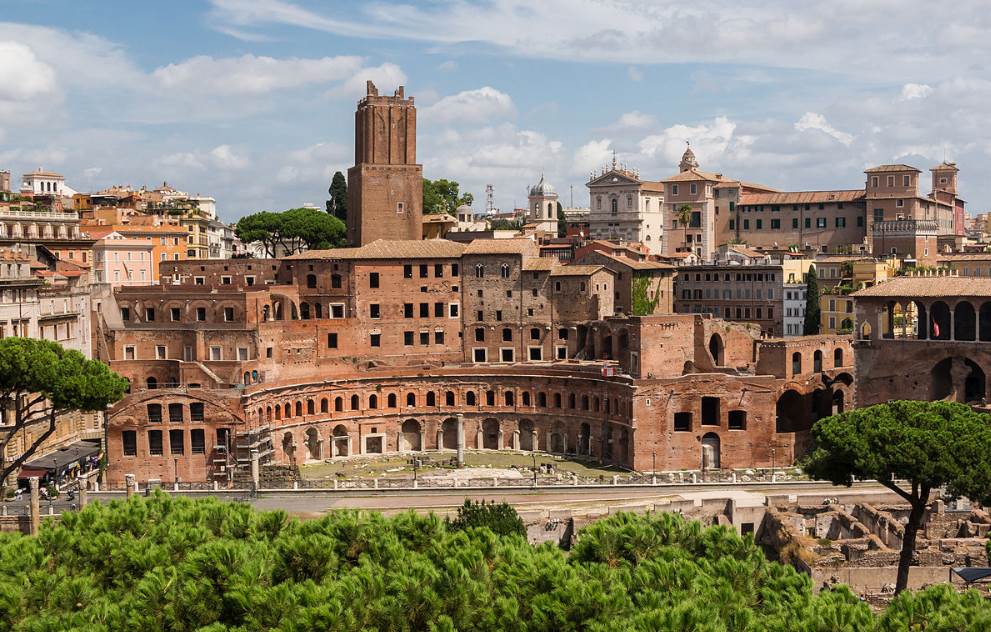
5. A construction project completed in the 1930s partially covered the forum
Nothing of the Carrara marble that once decorated the immense forum remains today. It was quarried from this ancient monuments nd used to build new structures all across the city.
This space was still used as a public square after the Fall of the Western Roman Empire in the 5th century, though, because part of it was strengthened with concrete.
During the Middle Ages, the forum was partially used for farming activities and houses and roads were constructed on top of it. The residential expansion of the city resulted in the forum gradually being buried below the street level and it came to be known as the Alessandrino district.
The Via dei Fori Imperiali was completed in 1933. It connects the forum with the Roman Colosseum and covers parts of the Forum of Trajan, the Forum of Augustus, and the Forum of Nerva. Today, excavations are still being conducted on both sides of this road.

More interesting facts about Trajan’s Forum
6. The Dacian Wars resulted in a Roman victory and ensured a large territory was added to the Roman Empire. Dacia covered vast parts of modern-day Romania and Moldova in Eastern Europe, and also parts of Bulgaria, Serbia, Hungary, Poland, Slovakia, and even Ukraine.
7. These spoils of war ensured Trajan could initiate numerous building programs, including this immense forum. This was exactly how the Roman Colosseum was constructed as well because Vespasian used the spoils of war from the war against Judea were used for this purpose.
8. To say that the Imperial fora were located close to each other in ancient Rome is an understatement. These public squares were located next to each other in the heart of the ancient city. These spaces must have been bustling with activity during the Roman Empire.

9. The Basilica Ulpia was the most important building on the forum because it housed several government institutions. Today, only the ruins of this building remain. This structure was named in Trajan’s honor as well because his full name was “Marcus Ulpius Traianus.”
10. When the Basilica Ulpia was completed, the political life of ancient Rome gradually moved from the older Roman Forum to Trajan’s Forum. It was a huge structure as well as it had dimensions of 117 x 55 meters (385 x 182 feet).
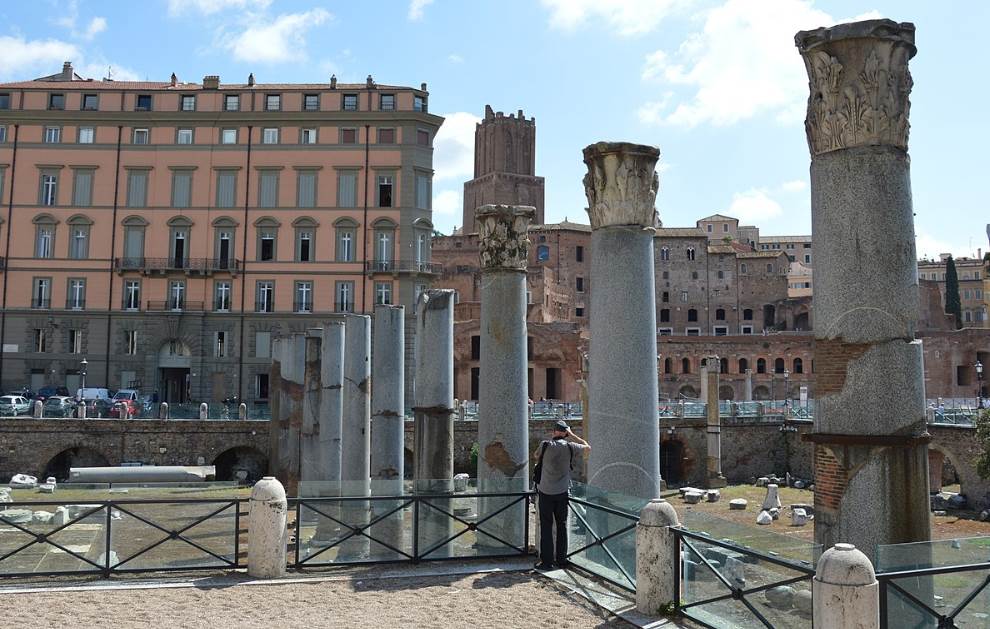
11. The Basilica Ulpia retained its significance until the Basilica of Maxentius and Constantine was completed on the Roman Forum in the early 4th century.
12. The Temple of Trajan wasn’t part of the forum when it was completed in the year 112. This structure was only constructed after Trajan’s death by his adopted son and successor Hadrian.
The temple was completed between 125 and 138 by the same architect Apollodorus of Damascus. It ended up being destroyed during the Middle Ages.
